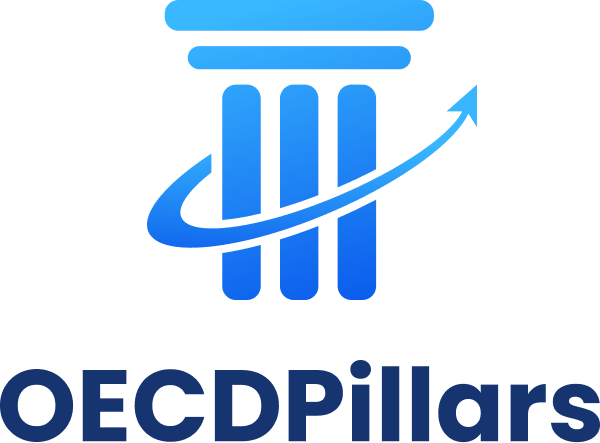General
If the amount of the exclusion exceeded net Pillar Two GloBE income there would be no top-up tax due unless additional top-up tax applied (for more information, see Additional Top-Up Tax). Any excess substance-based income exclusion is lost – it cannot be carried forward.
See our simple Substance-Based Income Exclusion Calculator for a simple illustration of how the Substance-Based Income Exclusion interacts with the Pillar Two GloBE Rules and the top-up tax calculation.
Election
The substance-based income exclusion applies automatically unless an MNE elects for it not to apply.
This is an annual election on a jurisdictional basis.
The purpose behind the election is to ease administration and compliance, where the costs of obtaining information to calculate the exclusion exceed any potential reduction in top-up tax as a result of the exclusion.
Carve-Outs
Article 5.3.2 of the OECD Model Rules provides that the substance-based income exclusion amount is based on the total of the payroll carve-out and the tangible asset carve-out for each constituent entity in a jurisdiction (excluding investment entities). This is based on the assumption that tangible assets and payroll are a good indicator of genuine economic activities.
Payroll Carve-Out
Article 5.3.3 of the OECD Model Rules provides that the payroll carve-out is equal to 5% of the constituent entities’ eligible payroll costs of eligible employees that perform activities for the MNE Group in the jurisdiction, except payroll costs that are:
• capitalized and included in the carrying value of tangible assets (as they would be taken into account for the tangible asset carve-out);
• attributable to international shipping income and ancillary income that is excluded for Pillar Two GloBE purposes.
Therefore, there are three aspects to determining the payroll carve-out:
1. Ascertain eligible employees
2. Identify their location
3. Ascertain their payroll expenses
Eligible employees can be full-time, part-time or independent contractors if they work in the ordinary activities of the MNE group and act under its supervision and control. This means independent contractors can still qualify if they are employed by a separate agency but work for the MNE under its control.
The location of employees is where they perform activities.
Eligible payroll costs are wide and don’t just include salaries paid. Qualifying payroll costs include:
• Salaries
• Medical insurance
• Pension contributions
• Bonuses
• Stock-based compensation such as share options and warrants
• Other benefits
• Payroll Taxes
• Employer social security contributions
As with other aspects of the Pillar Two GloBE rules, eligible payroll costs are based on the amounts included in the financial accounts of the constituent entities in the jurisdiction.
Payroll costs that are capitalized in the accounts under tangible fixed assets would be taken into account in the tangible asset carve-out. Other capitalized payroll costs qualify for the payroll carve-out.
The Administrative Guidance issued on July 17, 2023 provides that eligible Payroll includes stock-based compensation but is based on the amount included in the financial accounts used to determine the Constituent Entity’s Financial Accounting Net Income or Loss. It is not modified by the stock-based compensation election.
Tangible Asset Carve-Out
Article 5.3.4 of the OECD Model Rules provides that the tangible asset carve-out is equal to 5% of the carrying value of eligible tangible assets of a constituent entity located in a jurisdiction. Eligible tangible assets include:
• property, plant, and equipment located in the jurisdiction;
• natural resources located in the jurisdiction;
• a lessee’s right of use of tangible assets located in the jurisdiction; and
• a licence or similar arrangement from the government for the use of immovable property or exploitation of natural resources that entails significant investment in tangible assets
In order to qualify for the tangible-asset carve-out, the tangible assets must be located in the same jurisdiction as the constituent entity that owns them or has the right to use the assets.
Certain assets are specifically excluded from the carve-out. This includes property held for investment, sale or lease. The reason for this is that the carve-out is intended to provide a measure of relief for MNEs that have genuine physical activities in a jurisdiction – not simply purchasing investment property.
The amount of the tangible asset carve-out is based on the carrying value of the assets. As usual, the financial statements are used, but in this case, the consolidated financial accounts are used.
The carrying value is calculated based on the carrying value in the accounts of the constituent entity used to prepare the consolidated financial statements. Given intercompany transactions are eliminated in the consolidated financial accounts, intra-group transfers of tangible assets won’t be taken into account.
The carrying value is calculated as an average of the opening and closing carrying values.
Note that revaluations are excluded for the purpose of identifying the carrying value for the tangible asset carve-out.
The Administrative Guidance issued on July 17, 2023 provides that the carrying value of Eligible Tangible Assets includes adjustments for impairment losses.
If there is a reversal of the impairment charge under the applicable accounting standards, the amount of the reversal is taken into account in determining the carrying value of the Eligible Tangible Asset at the end of the Reporting Fiscal Year. However, an impairment charge can only be reversed to the extent that the total carrying value of the Eligible Tangible Asset does not exceed the carrying value that would have been determined (net of amortisation or depreciation) had no impairment loss been recognised for the asset.
As a permanent establishment (PE) is treated as a separate constituent entity for Pillar Two GloBE purposes, it is necessary to calculate eligible payroll costs and tangible asset costs for the PE separately from the main entity.
Article 5.3.6 of the OECD Model Rules provides that if separate financial accounts are prepared for the PE, they are used. If not, then separate financial accounts are required to be prepared based on the accounting standard the UPE used for the consolidated accounts.
The eligible carve-out costs are also required to be the amounts that would be attributed to the PE under Article 7 of the OECD model tax treaty.
Other Issues
Foreign Rules
One outstanding issue raised in the OECD Commentary to the Model Rules was the treatment of cases where employees perform work outside the employer’s jurisdiction and where tangible assets are located outside the jurisdiction of the Constituent Entity that owns or leases that asset.
The Administrative Guidance suggests a simplified approach so that all of the payroll carve-out or tangible asset carve-out can be retained by the Constituent Entity where:
– an Eligible Employee is located within the jurisdiction of the Constituent Entity employer more than 50% of their working time; and
– an Eligible Tangible Asset is located within the jurisdiction of the Constituent Entity owner more than 50% of the time.
Where an Eligible Employee or Eligible Tangible Asset is located in a jurisdiction 50% or less of the time, the Constituent Entity will only be entitled to claim the proportionate share of the payroll or tangible asset carve-out.
The Administrative Guidance also clarifies that an MNE Group is allowed to claim only a portion of its total Eligible Payroll Costs and Eligible Tangible Assets when calculating its Substance-based Income Exclusion.
Carrying Values
Article 2.1.2 of the Fourth Set of OECD Administrative Guidance (issued in June 2024) also includes specific provisions for calculating deferred tax when GloBE carrying values differ from the Accounting carrying value (see GloBE Deferred Tax Recalculations Based on GloBE Carrying Values).
However, it provides that for the purpose of the Substance-based Income Exclusion, the Accounting carrying value is used and any adjustments to arrive at the GloBE carrying value are not relevant for the Substance-based Income Exclusion calculation.
Transitional Rules
Under transitional rules in Article 9.2 of the OECD Model Rules, for the period between 2023 and 2032, the amount excluded under the payroll carve-out will be 10%, reduced by 0.2% for the first 6 years, and 0.8% for the last 4 years. The amount excluded under the tangible asset carve-out will be 8% reduced by 0.2% for the first 6 years, and 0.4% for the last 4 years.
Key Implications of the Substance-Based Income Exclusion
It reduces the tax base on which the top-up tax is levied.
Therefore, it decreases the additional amount of tax payable in order to meet the globally agreed minimum 15% ETR.
Tackles artificial profit shifting
The carve-outs require employees and tangible assets to be located in the jurisdiction in which the entity is located. These factors are generally expected to be less mobile and therefore less likely to lead to artificial profit shifting.
Lessens the impact of tax credits for low-profit margin companies
The higher ratio of expenses to income means carve-outs for these companies will be more significant, reducing top-up tax payable and lessening the impact of the GloBE rules whilst counteracting the impact of expenditure-based tax credits on the overall tax liability.
Allows for the continuation of tax incentives on investments without triggering GloBE rules
As the carve-outs are based on payroll costs and tangible assets, this enables governments to offer tax-reducing incentives on investments in these activities without triggering GloBE top-up tax or at least mitigating their impact on any top-up tax liability.
As noted in the OECD Report, Tax Incentives and the Global Minimum Corporate Tax: Reconsidering Tax Incentives after the GloBE Rules, the substance-based income exclusion has a significant impact on the provision of tax incentives.
Entities operating in capital intensive industries carrying-out activities that require high levels of economic substance in a jurisdiction will see less of an impact under the GloBE Rules. This equally applies to jurisdictions that typically have high levels of economic substance (ie the jurisdiction will be impacted less by the GloBE Rules).
The corollary to this is that tax incentives that are linked to the amount of economic substance will also see less of an impact under the GloBE Rules.
An impact of the GloBE Rules is that the substance-based income exclusion will have more of a beneficial impact on expenditure-based tax incentives as opposed to income-based tax incentives. This is because expenditure-based tax incentives are more likely to promote investment in tangible assets and payroll in a jurisdiction which then leads to a larger substance-based income exclusion.
















